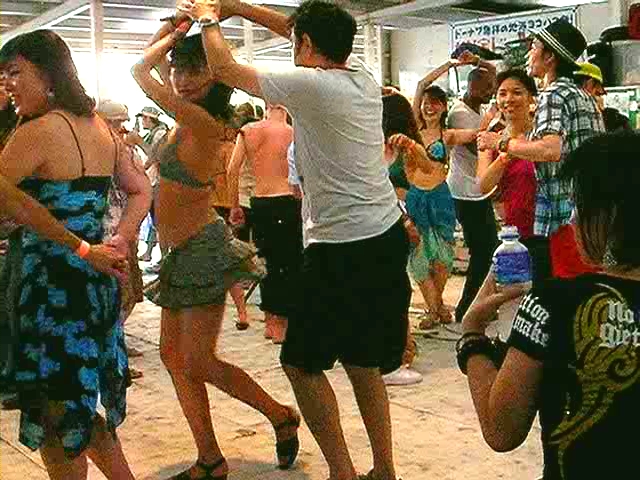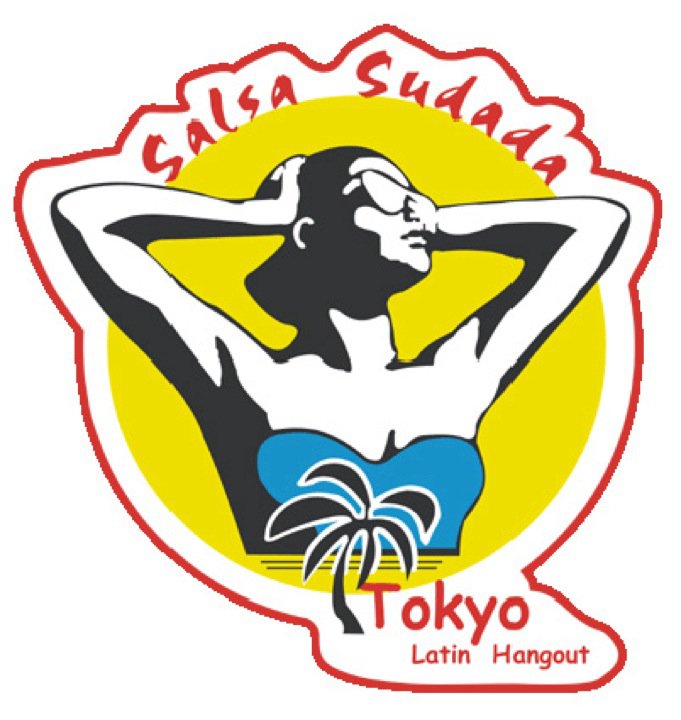| Hiking top |
| Lifestyle |
| Health: KeepForties |
| Novel: Dancing in Roppongi |
| Salsa dancing |
| Tennis |
| Tokyo history: Roppongi, Shinjuku, Shibuya |
| Business |
| Book: B2B Selling in Japan |
Lifestyle
Salsa dancing
The Tokyo region has a small but active sub-culture that enthusiastically dances salsa. Hip-hop and disco dancers vastly outnumber those doing salsa - but no matter, salsa is great fun (and good exercise too).
We'll attempt to provide some info about the Tokyo salsa scene, and a bit of background about salsa dancing itself. You can also get a good view of the Tokyo scene and of salsa, by reading the novel 'Dancing in Roppongi' - click here for a description.
A bit of background
Salsa is one of the numerous dances originating in the Caribbean and South America regions. New dances pop up every few years - and it's been happening for decades, maybe centuries. In the 1930s it was rumba, in the 1940s it was mambo. Brazil had samba, Argentina had tango. Habanera, son, lambada- and more recently, reggaeton, zouk, and others - the number and variety is quite broad, and the ones I've mentioned are only a fraction of the dances generated by these regions. An interesting article about this, dated 1947, is at
http://cuban-exile.com/doc_176-200/doc0200.html
Salsa began in Cuba, with a different name. Beyond that, much seems open to debate. One version I've heard is that in the 1950s, in Havana, several social clubs evolved a group dance that they called Rueda de Casino. Several pairs of dancers, in a circle ('rueda' in Spanish), do the same moves at the same time, as shouted out by a designated caller. In the US, there are also dances that have many pairs of dancers doing moves shouted out by a caller (square dancing and the Texas two-step, for example) but Rueda de Casino is much much more dynamic than those dances in the US.
Dancing in a group takes effort to arrange. Single pairs took the Rueda moves and danced them, retaining the Rueda basics of an 8-step cycle and rotating the moves in a mutual two-person circle.
Sometime in the 1960s or 1970s, musician-businessmen from New York saw this dance, and began promoting it in the US. They retained the 8-step cycle, but laid out the moves in a back-and-forth pattern, and dropped the group aspect And they changed the name to 'salsa' (which means 'spice' in Spanish), Some Cubans were/are irritated by this name change.
Over the years, several variations of salsa dancing evolved. When you go a salsa club, depending on where you are in the world, you may encounter:
-- New York style (also called "On 2")
-- Los Angeles style ("L.A. style", or "On 1)
-- Cuban style ("Rueda de Casino"). Miami style may be close to this.
-- several flavors from the South American countries: Colombian, Peruvian etc.
Also, while a large percentage (50% to 80%) of the songs played will be for salsa, music for other dances will also be played: merengue, bachata, reggaeton.
Click on these pages for more details:

